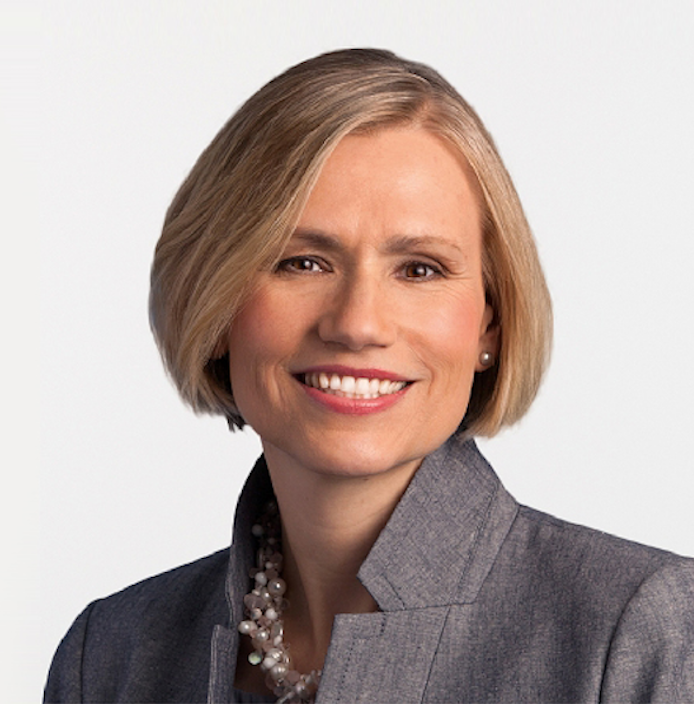by Kristina Hooper, Global Market Strategist, Invesco Ltd., Invesco Canada
Once again, the month of October has been living up to its frightful reputation for wreaking havoc on stock prices: 1929 and 1987 are prime examples, and we can now safely say that 2018 will also go down in history as an illustration of October’s ability to scare investors. Unfortunately, I don’t foresee this volatility easing too much over the next few weeks.
Volatility and sell-offs began earlier in the month but accelerated last week. On October 24, stocks experienced a major sell-off that erased all the gains for the year in many major U.S. indices. But that was just the beginning of the most recent roller coaster ride: The next day saw a powerful recovery, while the day after that brought another significant sell-off. As of Oct. 26, virtually all major indices around the world were in negative territory – some actually posting double-digit losses for calendar year 2018.1 In this risk-off environment, it’s not surprising that investors flocked to U.S. Treasuries, driving the 10-year yield down to 3.077%.1
Investors shrug off positive earnings announcements
As all of this was occurring, investors were also receiving positive economic data reports. For example, the first estimate of U.S. gross domestic product (GDP) growth for the third quarter clocked in at 3.5%.2 But I believe markets are looking beyond the third quarter, to future economic growth that may not be as robust, and that may be one reason for the downward volatility we have experienced. For example, housing data has been decidedly disappointing and may be the “canary in the coal mine” when it comes to recognizing the negative impact of Federal Reserve (Fed) tightening. In fact, many economists and strategists are worried that the third quarter of 2018 may represent the peak for economic growth. Also, they may be looking at third-quarter GDP growth more critically: After all, government spending was a major driver of GDP growth while business investment was quite modest.
Investors are worried that earnings may have peaked too, which may explain their pessimistic reaction to earnings surprises. S&P 500 Index companies that have reported positive earnings surprises for the third quarter have seen an average price decrease of -1.5% for the period from two days before the earnings release through two days after the earnings.3 This percentage decrease is well below the five-year average price increase of +1.0% for performance during this same window for companies reporting upside earnings surprises.3
I believe they may be right on both counts, but I expect economic growth to remain solid. However, risks are growing, given monetary policy is getting less accommodative and the trade situation appears likely to worsen. A number of companies have mentioned trade during their third-quarter earnings calls – and as I suspected, they have indicated that they have been seeing negative impacts. Last week, Caterpillar, 3M and Ford mentioned that input costs are rising, and that of course can be largely attributed to tariffs. I’m not surprised to see that, while earnings for the third quarter were strong, tariffs are being mentioned in earnings outlooks. In my view, it was only a matter of time before they started impacting companies and their bottom lines.
Adding to the trade concerns are worries that the Fed may choke economic growth. The Fed appears to be dead set on continuing to tighten – at least at this juncture. Fed Vice Chair Richard Clarida reiterated that message last week, which certainly did not allay jitters. However, Cleveland Fed President Loretta Mester did offer up a possible life preserver at the end of last week, explaining that the Fed will continue to assess the economic situation based on new data inputs – which sounds a lot like the “data dependent” monetary policy approach that investors enjoyed under former Fed Chair Janet Yellen.
Geopolitical risks continue to build
Brexit. The Brexit drama continued last week without a resolution in sight, as the proverbial clock ticks louder. European Central Bank (ECB) President Mario Draghi is clearly concerned about what economic policy uncertainty could do to companies. As he noted last week: “If this lack of outcome will continue and will approach the end date, the private sector itself will have to prepare on the assumption that there will be a hard Brexit. And that’s where things may be – I wouldn’t call it necessarily big financial stability risks, but certainly uneasiness, financial uneasiness in markets and financial intermediaries.”4 Although the ECB reiterated last week that it expects to end tapering at the end of 2018, I believe that a “no deal” between the UK and the EU could result in the ECB postponing the end of tapering. After all, the ECB has been the great stabilizing force for geopolitical turmoil on the European continent for a decade, and I expect that role to continue as long as Draghi is at the helm.
Brazil. Investors are also uneasy about the outcome of the Brazilian elections. While President-Elect Jair Bolsonaro’s victory did not come as a surprise, it is still causing trepidation (I’ve already gotten questions this weekend about what this means for investors). His election indicates that populism has spread to yet another part of the world – so now is an appropriate time to remind investors about some key elements of populism.
The Merriam-Webster dictionary describes populism as a political program or movement that champions the common person, usually by favourable contrast with an elite. Populist fervour is often the product of one or more of these factors:
• Wealth and opportunity gaps, especially an uneven recovery where elites are seen as prospering
• Xenophobia – a feeling that foreigners are threatening values and a way of life
• People’s frustrations with ineffective, bureaucratic government – often caused by political squabbling or ineffective policymaking.
For Brazil, I believe the first and third factors are the reasons for Bolsonaro’s election. Typically, populists have come to power by attacking the establishment, the elites, the powerful and the status quo – and we saw that with Bolsonaro. Populists can be left-wing or right-wing, and that matters in terms of their impact on the economy and markets (right-wing populists, at least initially, have historically been more positive for the economy and markets). Bolsonaro is a right-wing populist in the tradition of Italy’s Benito Mussolini. He has articulated a reform agenda that includes much-needed pension reform and so, not surprisingly, when almost all major stock markets were down on Friday, Brazil’s stock market was up. I believe that is an indication of things to come – we are likely to see a continued rally in Brazilian stocks as Bolsonaro moves forward with his pro-growth reform agenda.
Populism can create headwinds for growth because a key agenda element is usually anti-globalization, which might exacerbate current trade issues. However, I don’t believe that is a significant risk at this juncture, as Bolsonaro appears to be focused on fiscal reform within Brazil. It is important to note that stocks have initially reacted positively to right-wing populist leaders throughout history. Under Mussolini, for example, stocks rose about 70% from 1922 to 1924 (contrast that with left-wing populists such as Argentina’s Juan Peron and Venezuela’s Hugo Chavez, whose leadership brought a drop in stocks).5 However, we need to recognize that even under right-wing populist leaders, stocks have tended to react more negatively as the leader consolidates more power. And so we will want to follow Bolsonaro’s plans closely. If he does focus on consolidating power, that could turn Brazilian stock market sentiment from positive to negative. However, for now it seems his election may be positive for the economy and stock market in Brazil.
Europe. As tensions continue between Italy and the EU, we had a surprise development in Germany over the weekend, as Chancellor Angela Merkel announced she was stepping down as the leader of her political party; this comes after a succession of regional losses for her party and its coalition partner. I believe that investors should not overreact to this development as it was a long time coming, and it conforms with tradition. We have to recognize that Gerhard Schroeder did the same thing when his final term as German chancellor was coming to a close. Merkel’s move may help diffuse voter anger toward her, her party and her party’s coalition partner – which have experienced strong rebukes in recent elections. However, Merkel’s decision does raise questions about the future leader of the EU. While French President Emmanuel Macron is not very popular at home, I believe he will become the de facto leader of the EU, and I expect his tenure in that role is likely to be a successful one given his emphasis on reform at a much-needed juncture in the evolution of the EU.
United States. And then there are concerns about the U.S. mid-term elections in early November, as investors worry about what it may mean for policy. Therefore, I don’t think the episodic downdrafts in stock prices will end until after mid-terms.
Looking ahead
This week, we will want to closely examine the U.S. jobs report for the month of October. The key metric to watch is wage growth – if it remains modest, that gives the Fed more flexibility to take its foot off the accelerator in terms of tightening, especially if other economic data becomes more negative.
We will of course also want to watch U.S. mid-term elections closely. From my perspective, these elections will be important in helping to clarify our outlook for 2019.
This post was originally published at Invesco Canada Blog
Copyright © Invesco Canada Blog














